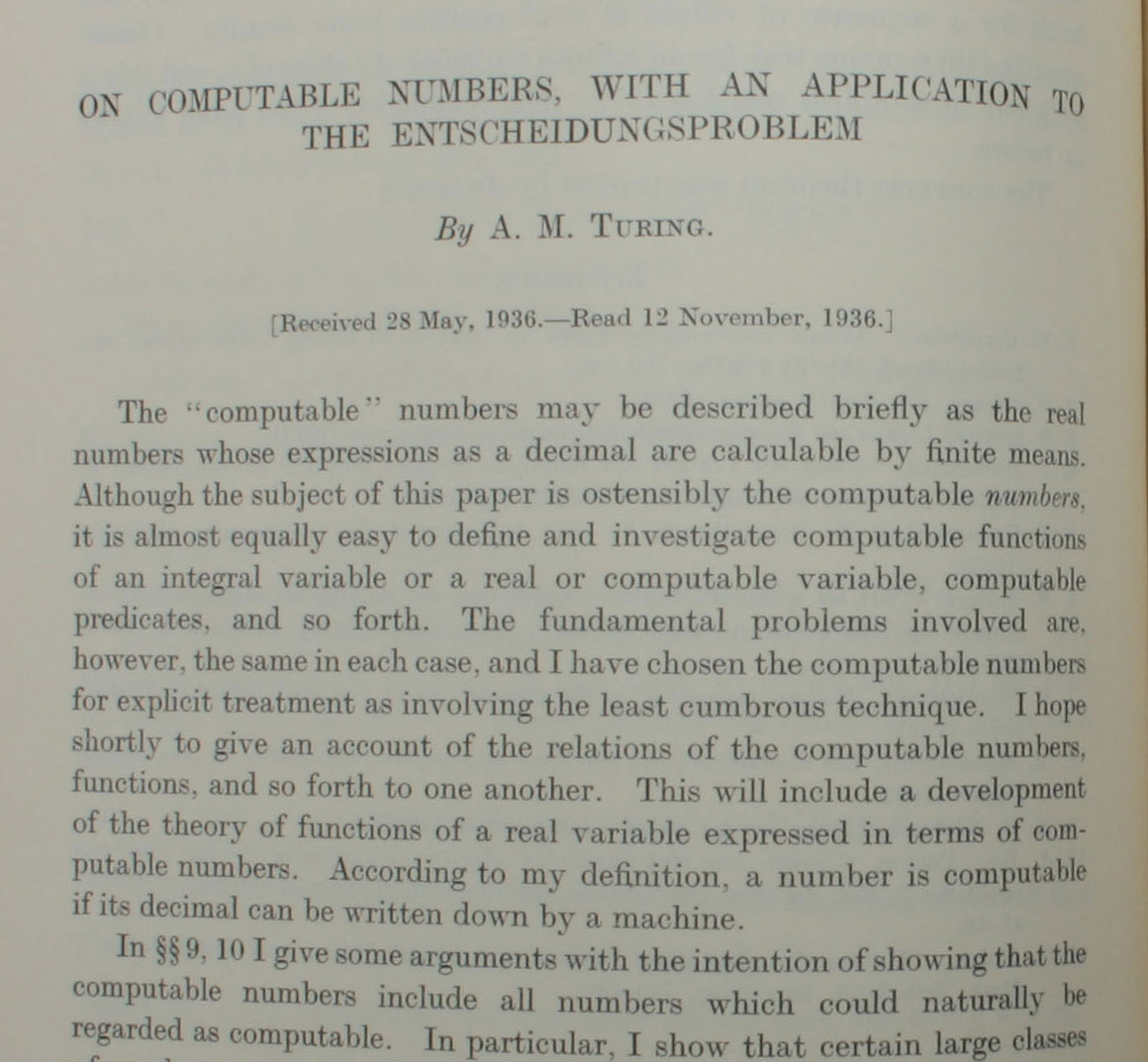1936 CAMBRIDGE
“It had an infinite memory capacity obtained in the form of an infinite tape marked out into squares on each of which a symbol could be printed.”
On Computable Numbers, with an Application to the Entscheidungsproblem (1936)
THE FACT
At the age of 24, in his paper On computable numbers, Alan Turing processes the logical principles of what is now known as the Turing Machine, rationale and archetype of all the digital processors and the concept of software. The technology historian George Dyson identifies in Turing the visionary architect protagonist of the ‘Big Bang’ of the digital universe in which we live today.
THE SCENE
An endless country road represents scenarios in which Turing, future marathoner, spent a lot of time running and thinking; this turns into the Turing Machine, infinite tape on which are written and processed data, symbols, movements and calculations; the actor plays a few passages from the article of 1936.
DOCUMENTS
“On Computable Numbers” by A.M. Turing, 1936
MICHELE TADINI. MACCHINA DI TURING
STEFANO POLLI. MACCHINA DI TURING
GEORGE DYSON. LA CATTEDRALE DI TURING
George Dyson, american writer expert on the history of technology, is the son of physicist Freeman Dyson. He has published several books, including Turing’s Cathedral: The Origins of the Digital Universe. La cattedrale di Turing, Le origini dell’universo digitale, Edizioni Codice 2012 (italian version)
EXTRA
A TURING MACHINE IMPLEMENTATION
Mike Davey ha realizzato un bellissimo esempio di macchina di Turing. Per maggiori informazioni: http://aturingmachine.com (in inglese)
LINKS
Alan Turing. On computable numbers, The TURING DIGITAL ARCHIVE
DEFINIZIONE DI TURING MACHINE. STANFORD ENCYCLOPEDIA OF PHILOSOPHY
ALAN TURING HOMEPAGE by ANDREW HODGES
This content is also available in / Questo contenuto è disponibile anche in : Italian

